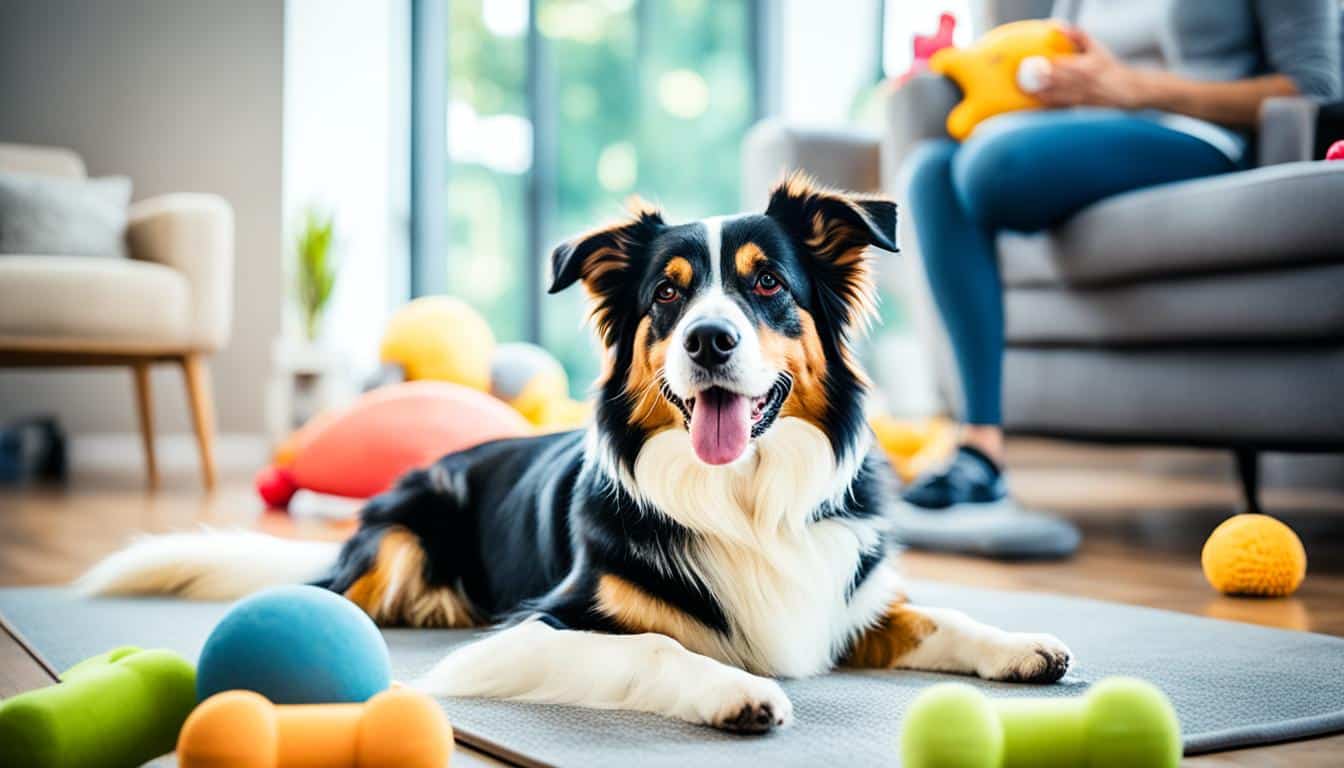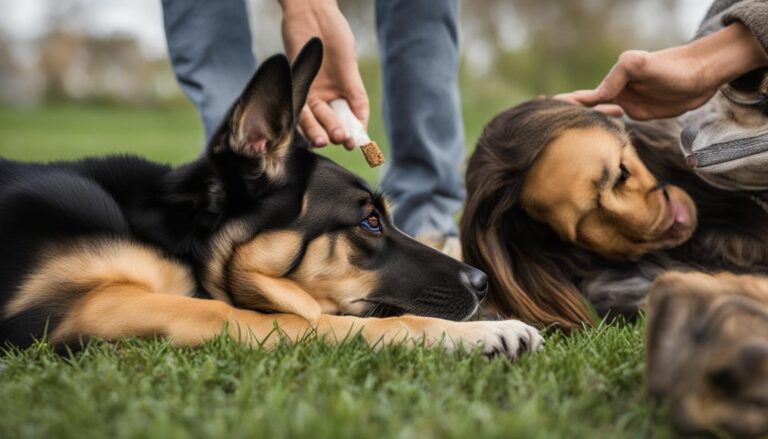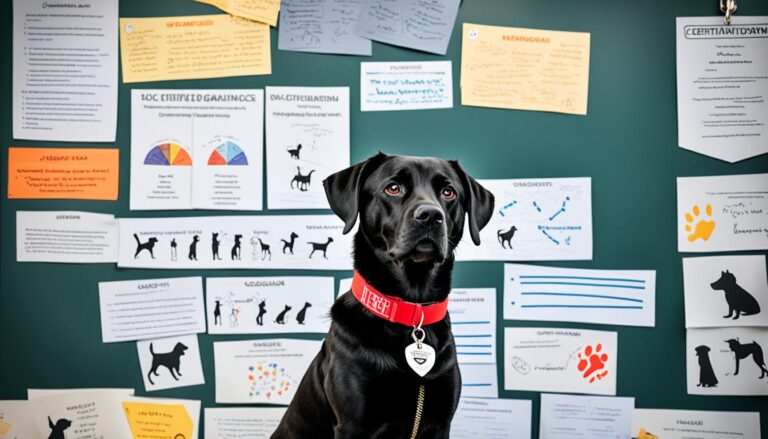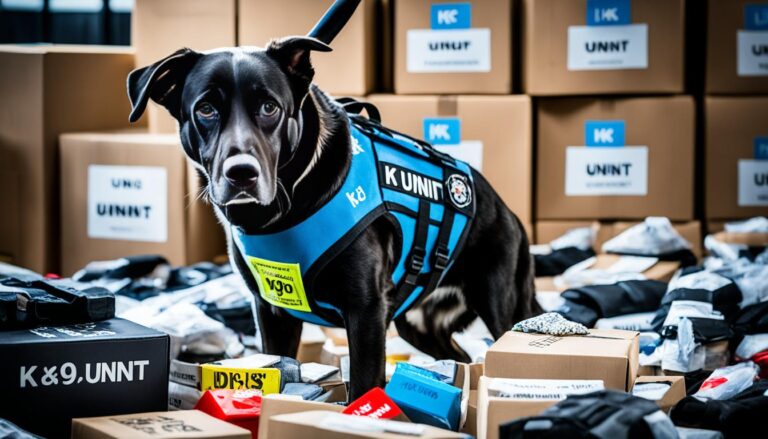How to Train a Dog for Anxiety
Do you ever wish you had a trusty companion by your side during moments of anxiety and stress? Someone who could sense your discomfort and provide comfort and support? Well, what if I told you that your furry best friend can be that someone?
Training a dog to recognize and respond to anxiety is not only possible but can be immensely beneficial for both of you. Imagine having a loyal and loving companion who can sense when anxiety strikes and knows exactly how to provide you with the support you need.
In this article, we will explore practical steps and techniques to train your dog for anxiety. Whether you are looking for a canine companion to help alleviate your anxiety symptoms or simply want to provide them with the skills to be a supportive presence in your life, we have got you covered.
So, let’s dive in and discover the wonderful world of dog anxiety training together!
Association with Anxiety
Creating an association between your dog’s presence and your anxious state is the first step in training them to recognize and respond to anxiety. By providing rewards during times of high anxiety, you can establish a positive connection in their mind.
- Start by giving your dog treats, toys, or other rewards when you are feeling anxious.
- Train them to perform a specific behavior that is associated with your anxiety, such as licking, nudging, or touching you.
- During anxiety episodes, reinforce this behavior by delaying the treats until they successfully perform the desired action.
This association will help your dog understand that their presence can provide anxiety relief and notification. It also reinforces the connection between their behavior and your emotional state, allowing them to assist you when you need it most.
By creating this positive association, your dog will learn to recognize when you are anxious and respond in a way that helps alleviate your anxiety. Training them in this manner strengthens the bond between you and your furry companion, and provides them with a sense of purpose and fulfillment.
Responding to Tells
Training your dog to respond to your tells is another effective method for anxiety recognition and behavior modification. By identifying a specific behavior or action that you exhibit when you start to feel anxious, you can train your dog to associate this “tell” with a preferred behavior. This allows your furry companion to provide assistance and support during anxiety episodes.
Begin by selecting a distinct action or behavior that can serve as a new cue for your dog. It could be something as simple as taking a deep breath, rubbing your temples, or pacing around. Ensure that this tell is consistent and easily identifiable.
Once you have established this tell, use positive reinforcement and rewards to train your dog to associate it with a specific behavior or action. For example, you could teach your dog to fetch their favorite toy or lie down beside you when they observe your tell. By consistently providing rewards and praise when they perform the desired behavior, your dog will learn to respond to your tells in a preferred manner.
It is important to gradually increase the time between the new cue and the old cue, allowing your dog to understand the connection. This process helps them generalize the behavior across different contexts and recognize your anxiety even without the tell being explicitly displayed.
To reinforce the association between the tell and the preferred behavior, practice the training in various situations and environments. This will help your dog generalize the behavior and respond appropriately to your anxiety cues, regardless of the setting.
Keep in mind that training your dog to respond to tells takes time and patience. Be consistent in your training approach and provide ample positive reinforcement to encourage preferred behavior. By establishing this communication and bond with your canine companion, you can enhance their ability to recognize and assist with your anxiety issues.
Respect Your Dog’s Emotional State
When it comes to training your dog for anxiety, it’s crucial to acknowledge and respect their emotional state. Just like humans, dogs can experience fear and stress, which can hinder their ability to focus and learn. Pushing them to perform in such situations will only add to their distress and make the training process harder. Instead, prioritize their emotional well-being by removing them from stressful situations.
If you notice that your dog is overwhelmed or exhibiting signs of anxiety, such as trembling, panting, or avoiding eye contact, gently remove them from the situation and provide them with a calm and safe environment. This will help them relax and regain their composure before continuing with the training.
Understanding your dog’s limits and being sensitive to their feelings is essential. Pay attention to their body language, and if you sense any signs of discomfort, take a step back and reassess the training approach. Remember, your dog’s emotional well-being should always be the priority.
Here are some tips to respect your dog’s emotional state during training:
- Create a calm and safe environment: Minimize distractions and ensure that the training area is free from any anxiety-inducing stimuli.
- Use positive reinforcement: Reward your dog for their progress with treats, verbal praise, or gentle petting. Positive reinforcement helps build trust and reinforces positive behaviors.
- Take it slow: Break the training sessions into shorter, more manageable durations. Gradually increase the complexity and duration of the training as your dog becomes more comfortable.
- Seek professional guidance: If you’re unsure about the best approach to training an anxious dog, consider consulting a professional dog trainer or behaviorist. They can provide expert guidance tailored to your dog’s specific needs.
Remember, training an anxious dog requires patience, understanding, and empathy. By respecting their emotional state and creating a supportive training environment, you can help them overcome their anxiety and develop the skills needed to navigate stressful situations with confidence.
Early Warning Signs of Anxiety and Fear
To effectively train a dog for anxiety, it is important to identify the early warning signs of anxiety and fear. By recognizing these signs, you can intervene before your dog becomes overwhelmed and prevent their anxiety from escalating.
Canine Body Language
- Yawning: Excessive yawning or yawning when not tired can indicate anxiety in dogs.
- Disinterest in treats or toys: If your dog suddenly loses interest in their favorite treats or toys, it may be a sign of anxiety.
- Panting: Rapid or excessive panting, especially when not associated with exercise or heat, can be a sign of anxiety.
- Sniffing the ground: Dogs may engage in excessive sniffing when they feel anxious or stressed.
- Growling: Growling can be a sign of fear or anxiety in dogs. It is important to address and understand the underlying cause.
- Lunging: Dogs that lunge towards people or other animals may be exhibiting fear or anxiety-driven behavior.
By paying attention to these early warning signs, you can proactively recognize when your dog is feeling anxious and take steps to prevent overwhelming anxiety.

Building Confidence
Building your dog’s confidence is a crucial part of anxiety training. By providing a predictable routine, you can create a sense of stability and security in their environment. Dogs thrive on routine, so establishing consistent daily activities can help them feel more at ease.
Teaching your dog basic obedience behaviors is another effective way to build their confidence. By mastering these behaviors, such as sit, stay, and come, your dog gains a sense of control and accomplishment. Make sure to reward and praise them when they successfully perform these behaviors, reinforcing positive associations.
Including dog sports in your training routine can also boost your dog’s confidence. Activities like agility training introduce new challenges and stimuli, helping your dog develop problem-solving skills and overcome fears. Additionally, participating in dog sports provides mental and physical stimulation, leading to a more well-rounded and confident canine.
The Benefits of Building Confidence:
- Your dog will feel more comfortable and relaxed in various situations.
- Confident dogs are better equipped to handle their anxiety triggers.
- Building confidence strengthens the bond between you and your dog.
- Confident dogs are more likely to exhibit appropriate behaviors in stressful situations.
- Confident dogs are more adaptable to new environments and experiences.
Remember, building confidence takes time and patience. Each dog is unique, so progress may vary. Be supportive, understanding, and celebrate even small achievements along the way. With consistency and positive reinforcement, your dog can develop the confidence they need to navigate the challenges of anxiety.
Desensitization and Counterconditioning
Desensitization and counterconditioning are effective techniques for reducing anxiety in dogs. These methods involve gradually exposing your dog to their triggers while creating positive associations.
To begin desensitization, expose your dog to their anxiety triggers at a distance where they do not react with extreme fear or anxiety. This could be a specific sound, object, or situation that typically triggers their anxiety. By starting at a safe distance, you can help your dog remain calm and comfortable.
During the exposure, pair it with positive stimuli, such as treats or toys, to create positive associations with the trigger. This helps your dog build positive emotions and associations with the previously anxiety-inducing stimulus.
Additionally, it’s important to gradually increase the intensity of the trigger over time. This can be done by moving closer or exposing your dog to the trigger for longer periods. Continuously reinforce their positive associations and reward them for remaining calm and relaxed throughout the process.
By using desensitization and counterconditioning techniques, you can help your dog build a more positive response to their anxiety triggers. Regular and consistent practice, along with gradual exposure, will enable your dog to develop stronger coping mechanisms and reduce their anxiety levels.
Tips for Training
When it comes to training an anxious dog, positive training methods are essential. Avoid using punishment, as it can worsen their anxiety and hinder progress. Instead, focus on positive reinforcement to reward desired behaviors and encourage confidence.
Patience is key when working with anxious dogs. Understand that anxiety can interfere with their ability to learn and progress, so be patient with their pace. Rushing the training process may cause further stress and setbacks.
Set realistic expectations for your dog during training. Remember that anxiety is a complex condition, and progress may take time. Celebrate small victories and focus on gradual improvement rather than expecting quick results.
A useful technique for anxiety training is nose targeting. This simple behavior involves teaching your dog to touch their nose to a target, such as your hand or an object. Nose targeting can help redirect your dog’s attention and encourage approach behaviors in anxiety-inducing situations.
By incorporating positive training methods, practicing patience, setting realistic expectations, and utilizing nose targeting, you can help your anxious dog overcome their anxiety and learn new behaviors.
Training Tips:
- Use positive reinforcement instead of punishment
- Be patient and understanding of your dog’s pace
- Set realistic expectations for progress
- Implement nose targeting to encourage approach behaviors
Don’t Hesitate to Stop or Pause Training in the Event of a Panic Attack
Dogs, like humans, can experience panic attacks. It is important to recognize the signs of panic in your dog and take immediate action to prevent further distress. Common signs of panic in dogs include cowering, tail between legs, hiding, trembling, excessive drooling, and frantic attempts to escape.
If you notice any of these signs during a training session, it is crucial to stop or pause the training immediately. Continuing with the training can worsen your dog’s anxiety and hinder their progress. Remember, training should be a positive experience that helps your dog feel safe and secure.
In the event of a panic attack, prioritize your dog’s emotional well-being over training goals. Provide them with comfort and reassurance, creating a calming environment to help them recover. You can try redirecting their attention to a favorite toy or engaging in soothing activities like gentle massage or aromatherapy.

Once your dog has calmed down, assess their state and decide if it’s appropriate to continue training or if it’s better to postpone it for another time. Every dog is different, and it’s important to respect their emotional needs and limitations.
Remember, it’s crucial to create a positive association with training, and forcing your dog to continue training in a distressed state can have negative consequences. By recognizing the signs of panic and providing the necessary support, you can help your dog overcome their anxiety and build a stronger bond of trust and understanding.
Learn to Recognize the Early Warning Signs of Anxiety
Understanding and recognizing the early signs of anxiety in your dog is crucial for successful training. By being aware of these signs, you can intervene early and create positive associations with triggers to help your dog overcome their anxiety.
- Snapping: If your dog suddenly snaps or shows signs of aggression, it may be an indication of anxiety.
- Growling: Growling can be a sign that your dog is feeling threatened or anxious.
- Excessive Barking: Dogs may bark excessively when they are anxious or stressed.
- Destructive Behavior: Anxiety can manifest in destructive behaviors, such as chewing on furniture or digging holes.
- Restlessness: If your dog is constantly pacing or unable to settle down, it may be a sign of anxiety.
- Yawning: Yawning can be a calming signal, indicating that your dog is feeling anxious or stressed.
Pay close attention to your dog’s body language. Look for signs such as a lowered tail, raised hackles, dilated pupils, or a hunched posture. These can also indicate anxiety or discomfort.
When you notice these signs, it’s important to intervene calmly and redirect your dog’s attention to a positive activity or environment. Avoid punishing or scolding your dog, as this can increase their anxiety.
Remember to engage in training when your dog is in a calm state. This will help them associate positive experiences with triggers that may have previously caused anxiety.
Consider Anxiety Medication
If all else fails and your dog’s anxiety persists, it may be time to consider anxiety medication. While training and behavioral techniques can be effective for many dogs, some cases require additional support. Anxiety medication for dogs can help alleviate symptoms and improve your dog’s overall well-being.
It is essential to consult with a veterinarian before starting any anxiety medication. They will assess your dog’s individual needs and prescribe the most appropriate medication for their condition. A veterinary consultation is crucial to ensure a proper diagnosis and effective treatment.
Anxiety medication should be considered as a last resort after exhausting other training and management strategies. It is not a quick fix solution and should be used in combination with behavior modification techniques. The veterinarian will monitor your dog’s progress and adjust the medication as needed, ensuring the best outcomes for your furry friend.
If you decide to explore anxiety medication for your dog, provide the veterinarian with comprehensive information about your dog’s behavior and history. This will enable them to make an accurate diagnosis and develop a tailored treatment plan. Remember, your dog deserves the best care possible, and anxiety medication can be a valuable tool in their overall well-being.






